Round The World and other travels
A frequent flyer's collection of trip diaries
June 2014: Bristol
Lying approximately 120 miles due west of London, Bristol dates from the 12th century and is today the UK's eighth-largest city by population. Standing on the River Avon and with a short coastline on the Severn Estuary, its growth and prosperity down through the centuries have been strongly linked with the sea, although in recent times aerospace has been more important to the city's economy than shipping. Bristol has tended to be overlooked as a tourist destination, except perhaps as a gateway to surrounding countryside and nearby Bath, where hotel rates are typically much higher. As I hope to show with these highlights, however, it is well worth a visit in its own right.
Bristol took a pounding in World War II, then suffered further from some early redevelopment schemes that, in retrospect, would now be regarded as misguided. More recent developments have tended to be more people-friendly and aesthetically inspired.
On a more personal level, Bristol is also now the home of my great friend and regular travelling companion Bruce, who has many times made an appearance on this website. However this trip was actually arranged prior to his move to Bristol, as a means of redeeming a small stash of soon-to-expire Emirates miles on Skywards redemption partner easyJet. It's just as well that my original hotel booking was made on a flexible basis!
Along with many other parts of the UK, Bristol was experiencing heatwave conditions during the weekend of my visit.
Broadmead, Castle Park and the Old City
The central Broadmead area is home to such varied points of interest as Cabot Circus, an attractive and modern shopping complex, and the oldest Methodist chapel in the world, which we came upon by accident. The nearby Castle Park contains the partially excavated remains of Bristol Castle, together with the ruins of two churches. To the west of Castle Park, the area around Corn Street has a number of attractive buildings, including the three sections that make up the St Nicholas Markets, popularly known as St Nick's.
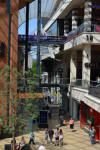 |
 |
 |
 |
 |
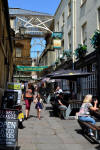 |
 |
 |
 |
 |
||
| ABOVE: Cabot Circus | ROW ABOVE (grey): First Methodist Chapel | TOP ROW CENTRE and ABOVE RIGHT: The Old Town, including the St Nicholas Markets | |||
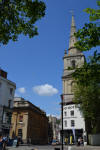 |
LEFT: Another Old Town view |
 |
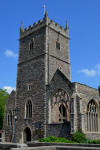 |
 |
| RIGHT: Castle Park and
the ruins of St Peter's |
 |
Waterbus ride: Temple Meads to the Waterfront
After lunch, we decided that it would be good to take a waterbus ride on Bristol's so-called Floating Harbour, a canal that largely parallels the tidal River Avon. What makes the situation a little more complicated is the fact that a section of the Floating Harbour occupies the original river bed, while the corresponding section of the Avon now flows through an artificial channel!
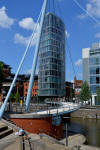 |
 |
 |
 |
 |
 |
 |
 |
 |
 |
 |
College Green
College Green is home to Bristol City Hall and to Bristol Cathedral. As far as the latter is concerned, I must confess that prior to doing research for this trip, I had never thought of Bristol as being one of the traditional English cathedral cities, yet in the event the building turned out to be very impressive indeed. Founded in 1140 as St Augustine's Abbey, it certainly has a long history, only becoming the Cathedral Church of the Holy and Undivided Trinity on creation of the Diocese of Bristol in 1542.
Bristol University is just a short walk up Park Street from College Green.
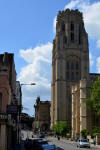 |
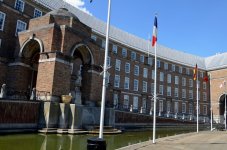 |
FAR LEFT: Bristol University |
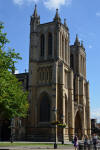 |
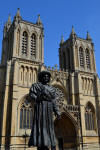 |
| LEFT: City Hall | ||||
| RIGHT and BELOW: Bristol Cathedral |
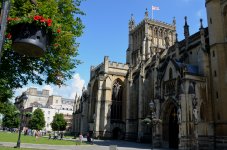 |
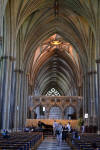 |
 |
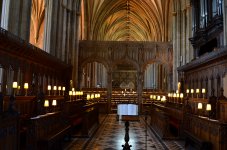 |
 |